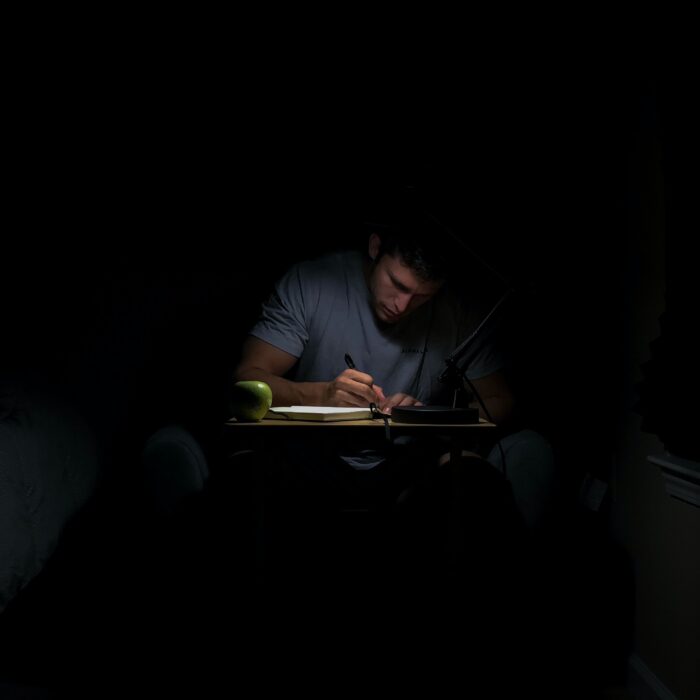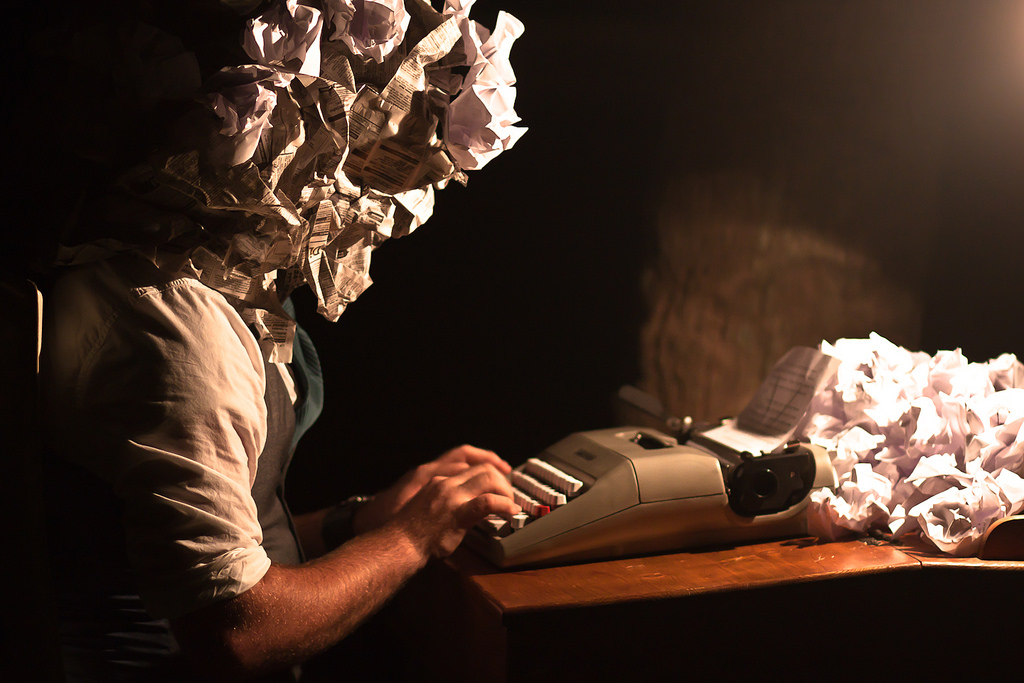You have no items in your cart. Want to get some nice things?
Go shopping
Writers are, by nature, an introspective bunch. We mine the seams of our own lives for insights that feed our work. Writing is our way of processing the world, of making sense of our experiences by rendering them into meaningful narratives. In fact, this is what all artists do. Our creative work is our most authentic voice in the wider world and putting our work out there is an act of self-exposure. So receiving a negative review can feel a bit like being told to shut up and, worse still, by someone who doesn’t know you at all.
No-one who writes a book puts out one that is intentionally shoddy or poorly-finished. Most writers have worked pretty hard to get it into the best shape they can. Even so, negative reviews are inevitable. There is no such thing as perfection in art. Art, like beauty, is in the eye of the beholder. There are as many types of reader as there are writer and your book is never going to please them all. Of those it doesn’t please, some will be more than happy to savage your work publicly.
Goodreads, the powerhouse of book review sites, has some interesting wording in its review guidelines, encouraging ‘harsh, critical comments’ of the sort ‘this guy can’t write a lick’ or ‘this book is absolute trash’. This stunned me when I first read it. But then I wouldn’t dream of saying such a thing about anyone’s book in a public forum even if I thought it privately. Authors are (quite rightly) discouraged from engaging with negative reviewers, which at times can give Goodreads the air of a duck-shoot where the author and their books are the target, even if this wasn’t the spirit in which the site was created.
When I first discovered Goodreads, I looked up my all-time favourite books. Books I’ve adored over the years. Books that genuinely changed how I think. Books that I bought as gifts for people I admired, loved and connected with. Anna Karenina, one of the greatest love stories of all time, has a rash of one star reviews. One reader found Jude the Obscure, a book about the conflict between the divine and the carnal within the human psyche, ‘whiny and depressing’. Sure, for some people Jude may well feel whiny and depressing. But it needs to be said that it took a certain kind of writer to create a book like it and it will need a certain kind of reader to appreciate it fully for what it is.
J.M Coetzee’s Elizabeth Costello is another example which has completely divided readers and been heavily criticised by those who had hoped for a rerun of Coetzee’s Man Booker winning Disgrace. At times, Elizabeth Costello reads as much like an academic treatise as it does a novel. There is no doubt that it’s harder work to read than most contemporary novels. It’s one of the very few books I have kept aside to re-read later in my life because I know that there is more to be gleaned from it. Yet so many people have struggled to enjoy it at all. Nevertheless, in my opinion, it is a book most worthy of coming to in a spirit of trust and openness.
Ultimately every author writes for a certain kind of ‘target reader’, someone who will understand and be interested in the themes they explore, enjoy their style of expression and connect with their characters. Yet motivations for reading are manifold: to be challenged, to learn something different about the human condition, to enjoy the musicality and texture of language, or simply to be transported for a while, to be entertained. All of these motives are of equal value. But it is a rare book that can fulfil them all. So, for some readers your book, my book, any writer’s book will necessarily be a one star experience. In the end, the only way to deal with a negative review is to ignore it. That reader has not ‘got’ your book. Another reader will.
At this point I feel compelled to comment on the absurdity of rating a book from one to five stars in the first place. No-one would dream of walking through the Tate Modern and rating a canvas in this way: ‘Hmm, Peter Doig, too bleak. Gives me the heebie-jeebies. One star..!’ In other artistic fields, it’s considered self-evident that the audience’s response to a work of art is too subjective, too diverse, for there to be a meaningful way of ‘ranking’ it. But then we don’t buy original paintings off Amazon. If we did, they’d probably be rated by stars. True, no-one is going to read through hundreds of reader reviews to get an idea of whether a book is for them or not, they may as well just use the time to read the book. Instead some are simply going to look at the star rating, even if it makes little sense that a book, which has as much claim to being a work of art as a painting, should be judged this way at all.
Some time ago, a work colleague confessed to me that, though he understood books and music as art forms, he just didn’t ‘get’ visual art. I thought about this a lot. I’d just been to see an exhibition by Peter Doig at the Tate. Doig’s paintings cannot be described as ‘beautiful’ in the usual sense. They feel desolate, extreme, disturbing. In addition, it’s impossible to identify the subjects of his paintings. Is it the derelict building, the patrol car on the opposite shore, is it us (the viewer), is it the discomfort, the uncertainty, that the images evoke? What we believe the subject to be depends on what we, the viewers, bring to the work ourselves (and, in my opinion, herein lies Doig’s genius).
Before I started writing seriously, I often approached art as a consumer. My opinion of a work of art was usually based on what made sense to me or what had (to my eyes) aesthetic value. As I progressed along the writer’s path, I began to understand that the piece of work itself is the culmination of a much longer process and without seeing it within the context of its process, (and within its historical or social context also), it cannot be fully appreciated. I tried to explain this to my work colleague using the example of Peter Doig. In order to create, for example, his canvases of derelict buildings seen from behind the treeline, the artist had presumably lived and breathed the same moment of encounter and surprise for many weeks if not months prior to the finishing of the actual canvas. Moreover, Doig’s paintings prompt us to try and construct a narrative because this is the normal human response to everything. It is how we respond to the events of our own lives let alone a work of art: we require them to have meaning. Of course an artist creates using their own narrative, not ours, though elements of it will be universal, applicable across the board irrespective of setting or culture. For me, considering Doig’s paintings with all of this in mind gave them an entirely different set of meanings and made the experience of viewing them a great deal richer than it might otherwise have been.
Kasemir Malevich is probably an even better example of an artist whose work cannot be fully understood or appreciated out of context. One needs to approach his work as his response to the social, political and personal upheaval that he lived through. What would someone who had not taken the trouble to do so make of his Black Square?
Books of fiction of course are usually designed as a coherent narrative where there is less ambiguity about meaning or subject. But this being so means that we tend to approach a text with more rigid expectations than we might have of, say, an abstract painting. A lot of the time when I see a negative review, it is clear that there is a disconnect between the reader’s expectations and their actual experience of the text. In other words, they are expecting their own narrative to be repeated, reinforced or at least dovetailed with. A criticism I have heard more than once of my novel, Esperanza Street, is that the ending made the reader feel empty or sad. They had expected it to end on a high note. To which I say ‘shucks’. A reader’s need for a happy ending says more about their personal narrative than it does about the failings of my book. The book is what it is. It is built from my experiences, my attitudes, my associations, my life journey, not theirs. Expecting it to be something else is like going up to a complete stranger and asking why they aren’t taller/fatter/richer/differently dressed. So in the end perhaps the only thing that can be fairly criticised about a book is the craft, if it is obviously deficient, not the content. (But, please note, if you’re going to feel free to criticise my craft or anyone else’s, you’d better be a maestro yourself!)
So what to do? For any author smarting from a negative review or a snotty star rating, I heartily recommend the Goodreads exercise. Make a list of the best books you’ve ever read, the utter paradigm-shifting classics, and then read some of the bad reviews they’ve been given. I guarantee it will make you feel better.
About Niyati Keni
Niyati Keni’s first novel, Esperanza Street, was released by indie literary press, Andotherstories, in February 2015. Described by Kirkus Reviews as a ‘luminous, revelatory study on the connection between person and place’, Esperanza Street is set in a small-town community in pre-EDSA revolution Philippines. Keni studied medicine in London and still practices part-time as a physician. She has travelled extensively within Asia. She graduated with distinction from the MA Writing at Sheffield Hallam University in 2007. She is now based in the south east of England where she is working on her second novel.



